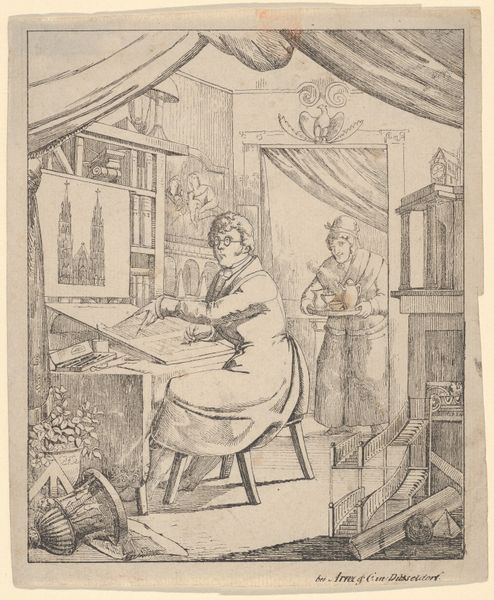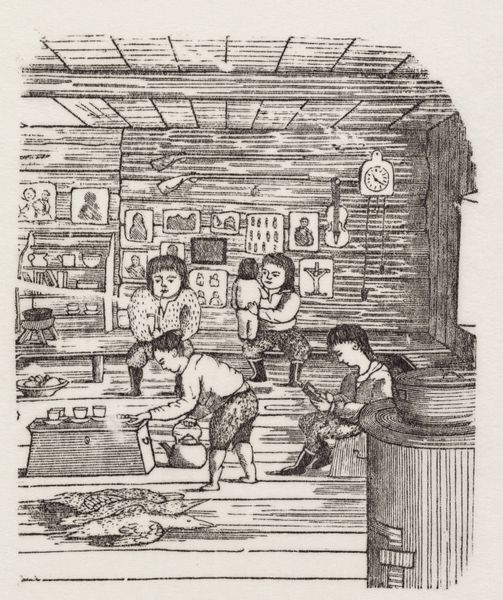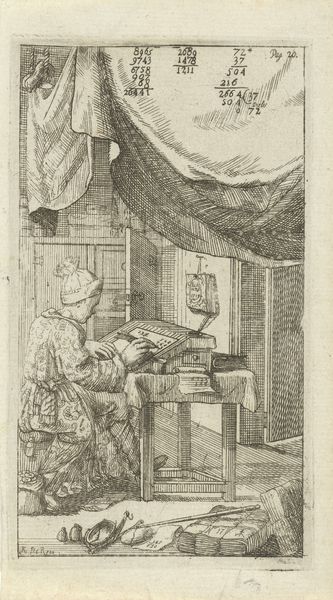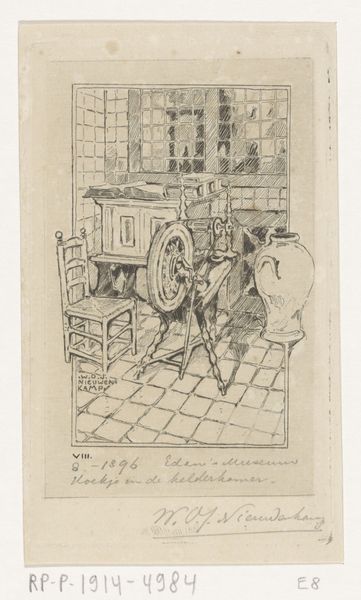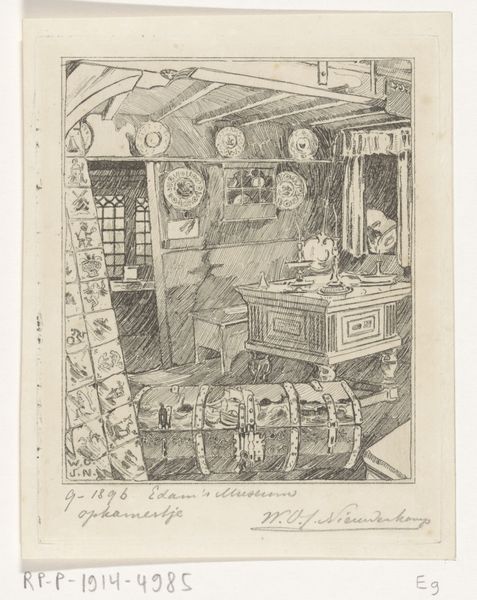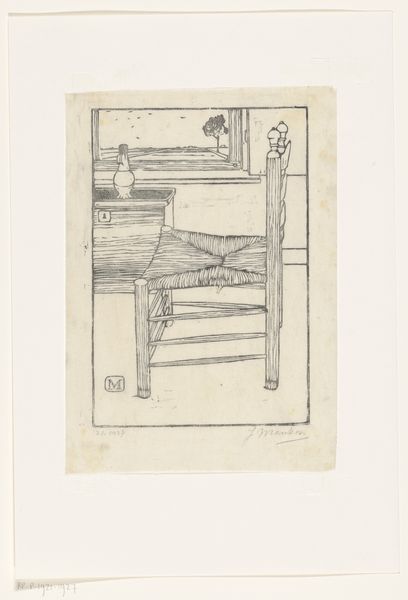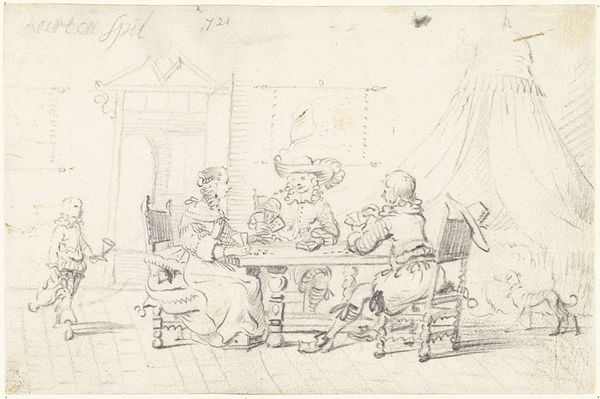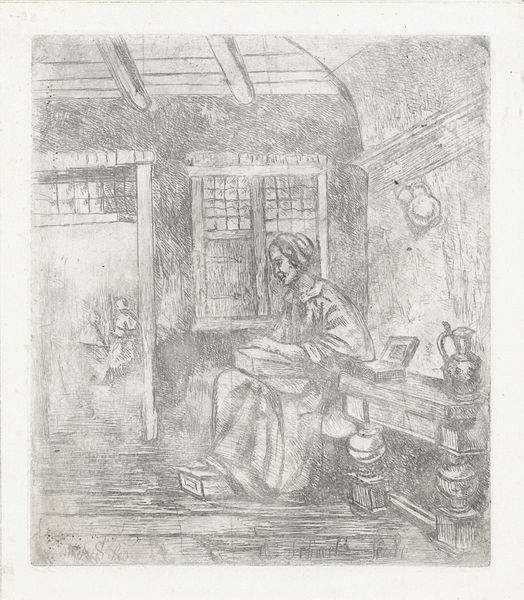
drawing, print, etching, ink, pen
#
drawing
#
comic strip sketch
#
dutch-golden-age
# print
#
pen sketch
#
etching
#
old engraving style
#
personal sketchbook
#
ink
#
sketchwork
#
pen-ink sketch
#
pen work
#
sketchbook drawing
#
pen
#
genre-painting
#
storyboard and sketchbook work
#
sketchbook art
#
realism
Dimensions: height 137 mm, width 104 mm
Copyright: Rijks Museum: Open Domain
Wijnand Otto Jan Nieuwenkamp created this print of a cellar room in the Edams Museum using etching, a process dating back to the early 16th century. The lines you see were created by the artist drawing through a wax coating on a metal plate. The plate was then bathed in acid, which bit into the exposed metal, creating grooves that hold ink. The material of the print – paper – and the process of etching allowed Nieuwenkamp to create multiple identical images. This reproductive capacity democratized art, making it accessible beyond elite circles. The scene itself, a modest cellar interior, speaks to the everyday lives of ordinary people. Notice the tiled floor, the simple wooden furniture, and the objects arranged on the table. Each element is rendered with precise lines, demonstrating Nieuwenkamp’s skill as a draughtsman and etcher. This intimate view into a domestic space invites us to reflect on the relationship between art, craft, and the representation of daily life.
Comments
No comments
Be the first to comment and join the conversation on the ultimate creative platform.

